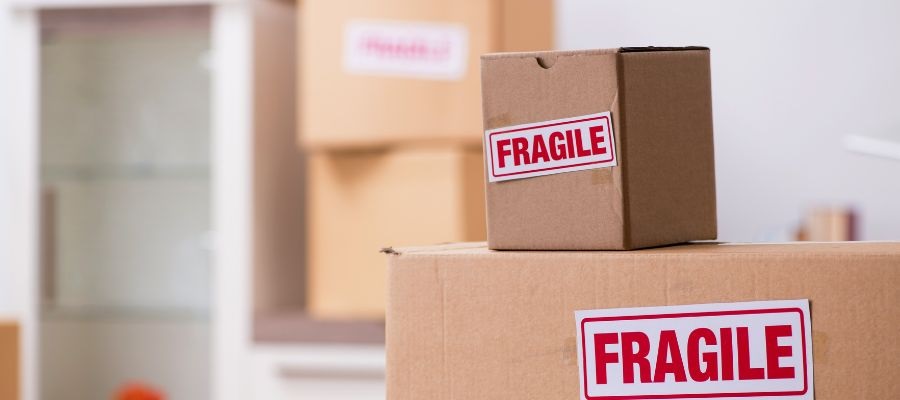Preserving valuable and fragile items is crucial to maintaining their longevity and ensuring they remain in top condition. Whether it’s precious antiques, delicate artwork, or sentimental heirlooms, proper storage and preservation techniques are essential. In this article, we will discuss the best practices for safely storing and preserving valuable and fragile items.
1. Assess the Condition of the Items
Before storing any valuable or fragile items, it is important to assess their current condition. Check for any existing damage, such as cracks, chips, or discoloration. Documenting the condition of the items through photographs can be helpful for insurance purposes and tracking any changes that may occur over time.
This assessment will also help in determining the appropriate storage method to prevent further damage. Make sure to clean and properly protect the items before storing them to maintain their condition. Consider using appropriate packing materials such as bubble wrap, tissue paper, or padded boxes to cushion and protect fragile items. Store the items in a cool, dry place away from direct sunlight and extreme temperatures. Regularly check on the stored items to ensure they remain in good condition.
2. Choose the Right Storage Environment
The storage environment plays a significant role in the preservation of valuable and fragile items. Ideally, items should be stored in a cool, dry, and dark place. Avoid areas with high humidity, temperature fluctuations, or exposure to direct sunlight, as these can cause irreparable damage.
Proper storage conditions help prevent deterioration, discoloration, mold growth, and insect infestation. It is important to use archival-quality materials such as acid-free boxes, folders, and tissue paper to further protect items from damage. Additionally, maintaining a stable environment free from pests and pollutants is crucial for long-term preservation. Regular monitoring and assessment of storage conditions are recommended to ensure the continued protection of valuable and fragile items.
3. Use Appropriate Storage Containers
When selecting storage containers for valuable and fragile items, opt for materials that are archival quality and acid-free. Acid-free tissue paper, bubble wrap, and archival boxes can help protect items from dust, moisture, and light exposure. Avoid using plastic bags or containers, as they can trap moisture and lead to mold growth.
When choosing storage containers for valuable and fragile items, it is best to choose materials that are archival quality and acid-free. Acid-free tissue paper, bubble wrap, and archival boxes are excellent choices to protect items from dust, moisture, and light exposure.
It is important to avoid using plastic bags or containers, as they can trap moisture and promote mold growth, which can damage the items being stored. Opting for high-quality storage materials will help preserve the integrity and longevity of your valuable and delicate items.
4. Handle Items with Care
Proper handling is crucial when storing valuable and fragile items. Always use clean hands or wear gloves to prevent transferring oils and dirt onto the items. When moving items, support them from the bottom to distribute weight evenly and reduce the risk of breakage.
Proper handling is essential when storing valuable and fragile items to ensure they remain in good condition. It is important to always use clean hands or wear gloves to prevent transferring oils and dirt onto the items, which can cause damage over time.
When moving items, it is recommended to support them from the bottom to distribute weight evenly and reduce the risk of breakage. By following these simple guidelines, you can help preserve the integrity of your valuable and fragile items for years to come.
5. Implement Regular Inspection and Maintenance
Regularly inspect stored items for any signs of damage or deterioration. Check for pest infestations, mold growth, or changes in the item’s condition. Implementing a routine maintenance schedule can help catch any issues early and prevent further damage.
6. Consider Climate-Controlled Storage
For particularly sensitive items, consider investing in climate-controlled self storage units Nottingham. These units regulate temperature and humidity levels, creating an optimal environment for preserving valuable and fragile items. While they may come at an additional cost, the long-term benefits outweigh the expense.
7. Rotate Items Periodically
To prevent damage from prolonged exposure to light or pressure points, consider rotating stored items periodically. This can help distribute any potential wear and tear evenly and reduce the risk of damage from being in the same position for an extended period. Rotating stored items periodically can also help to maintain their overall condition and longevity. It is especially important for items such as clothing, shoes, and furniture that can easily be affected by light and pressure. By regularly moving and using stored items, you can ensure that they stay in good shape and continue to be functional for a longer period of time.
8. Seek Professional Advice
If you are unsure about the best storage and preservation practices for specific items, consider seeking advice from professionals. Conservators, art handlers, or antique experts can provide valuable insights and recommendations tailored to your unique items. These experts can advise on the ideal environmental conditions, handling procedures, and storage methods to ensure the long-term preservation of your valuable possessions. Their expertise can help prevent damage from factors such as light, temperature, humidity, pests, and improper handling. By consulting with professionals, you can rest assured that your items are being stored and preserved in the best possible way.
Conclusion
Safely storing and preserving valuable and fragile items requires careful planning and attention to detail. By following the best practices outlined in this article, you can ensure that your treasured possessions remain in excellent condition for years to come. Remember to assess the condition of the items, choose the right storage environment, use appropriate containers, handle items with care, implement regular inspection and maintenance, consider climate-controlled storage, rotate items periodically, and seek professional advice when needed. With proper care and preservation techniques, you can enjoy your valuable and fragile items for generations to come.

